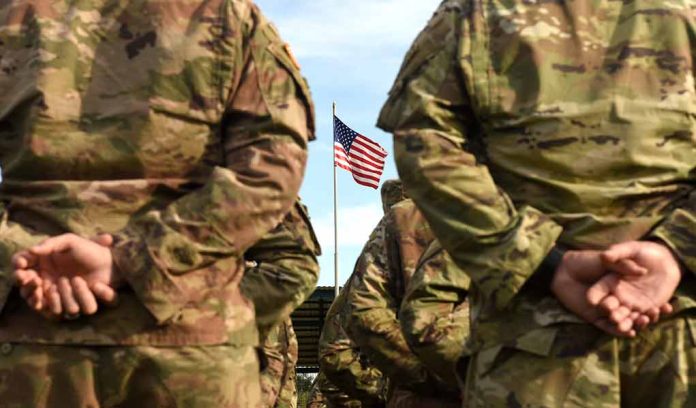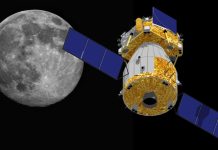
The US and Panama have reportedly agreed to allow American troops near the Panama Canal for training exercises, sparking debate over security cooperation versus national sovereignty in this strategic waterway.
Top Takeaways
- A memorandum of understanding allows US troops to be stationed along the Panama Canal for training and military exercises, but without permanent bases
- Panama’s government has firmly rejected any permanent US military presence, maintaining its territorial sovereignty
- Defense Secretary Pete Hegseth proposed reviving former US military facilities in Panama including Fort Sherman and Rodman Naval Station
- The Trump administration has expressed concerns about Chinese influence near the canal and disputes over fees for US naval vessels
- The Panama Canal remains critical to global trade, with approximately 40% of all US container traffic passing through it
Sovereignty Concerns Amid Military Cooperation
The reported memorandum of understanding between the United States and Panama has created significant diplomatic tensions as both nations navigate their strategic relationship regarding the Panama Canal. Defense Secretary Pete Hegseth has outlined plans that would increase military cooperation while stopping short of re-establishing permanent American bases. The agreement appears focused on joint training exercises and operations that would enhance interoperability between American and Panamanian forces.
Panamanian officials have drawn a clear line regarding their sovereignty. Security Minister Frank Abrego emphasized the government’s position, stating: “Panama made clear, through President Mulino, that we cannot accept military bases or defense sites.” This stance reflects Panama’s determination to maintain control over its territory since the canal’s handover to Panamanian authorities in 1999, following the implementation of the 1977 treaty.
The proposed cooperation would involve several former US military installations. Hegseth specifically mentioned “reviving the Jungle School alongside Panamanian forces” at Fort Sherman, and potential activities at Rodman Naval Station and Howard Air Force Base. These locations housed American military personnel before the 1999 handover but would now reportedly host only rotational forces rather than permanent troops.
JUST IN – Panama deal allows US to deploy troops to canal — The document, signed by top security officials from both countries, allows US military personnel to deploy to Panama-controlled facilities for training, exercises and a range of other activitieshttps://t.co/lCOAVmZbUA
— Insider Paper (@TheInsiderPaper) April 11, 2025
Strategic Maritime Interests and Chinese Influence
The Trump administration has expressed mounting concerns about Chinese influence in the region, particularly regarding operations near the Panama Canal. Defense Secretary Hegseth addressed this issue directly during his visit to Panama. The canal remains vital to American economic interests, with approximately 40% of all US container traffic passing through this maritime chokepoint annually, making its security a matter of national importance.
“We do not seek war with China. And war with China is certainly not inevitable. We do not seek it in any form. But together, we must prevent war by robustly and vigorously deterring China’s threats in this hemisphere,” stated Hegseth.
The issue of canal transit fees has become another point of contention. The Trump administration has sought preferential treatment for US warships, essentially requesting they pass “first, and free.” Panama has countered with a proposal for a “cost-neutral compensation system” rather than free passage. Jose Ramón Icaza, representing Panama, clarified: “We will seek a mechanism by which warships and auxiliary ships can have a compensation system for services, that is, a way to make them cost-neutral but not free.”
In a significant development affecting Chinese interests in the region, Hong Kong-based firm CK Hutchison, the parent company of Panama Ports, has announced plans to sell its canal-adjacent port operations to a US-led consortium. This move appears to address American concerns about foreign control of critical infrastructure near this strategic waterway. However, Chinese legislators recently placed a hold on the sale drawing doubts about its transfer.
Historical Context and Current Implementation
The relationship between the United States and Panama regarding the canal carries significant historical weight. The United States controlled the Panama Canal Zone from its construction until 1999, and conducted a controversial invasion in 1989 to remove dictator Manuel Noriega. This complex history informs current negotiations as both nations work to define appropriate security cooperation without undermining Panamanian sovereignty.
The current memorandum comes at a time of heightened global tensions and increasing concerns about supply chain security. The Panama Canal Authority, which manages canal operations, maintains that all vessels must pay standard rates, regardless of national origin. This aligns with their mandate to operate the canal as a commercially viable enterprise while recognizing Panamanian sovereignty. The timeline for implementing the new agreement remains unclear, with no specific deployment dates announced.






















